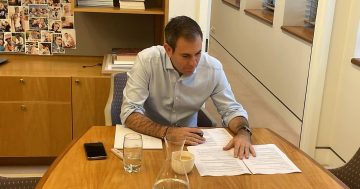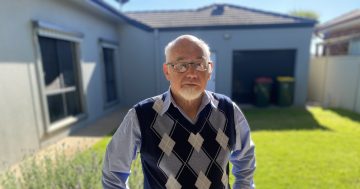John Durie* says the most consistent thing about super funds’ retirement income statements is their difficulty to find.
 A review by Investment Magazine of some of the responses to the Retirement Income Covenant (RIC), which came into effect on July 1, shows a wide disparity with one unifying feature being the required summary statements were often difficult for a novice to find.
A review by Investment Magazine of some of the responses to the Retirement Income Covenant (RIC), which came into effect on July 1, shows a wide disparity with one unifying feature being the required summary statements were often difficult for a novice to find.
Perhaps this typifies the industry’s need to improve on disclosure or ambivalence by some in the retiree market but suffice to say it would take the average member some time to find the required statements.
The RIC was part of the Morrison government’s strategy to get funds to focus on retirement rather than just accumulation.
The legislation is principles-based rather than prescriptive to allows funds to come up with innovative solutions for their members and funds were required by law to publish their summary statements on their websites.
The variation is also a reflection of the fact the summary statement for many were just the starting point and the strategy process has only just begun.
Varied response
The range of responses was wide with industry behemoth AustralianSuper using the required statement more as a marketing tool, pointing members to what is on offer and what they need to look for.
At the other end of the spectrum, Commonwealth Superannuation Corporation (CSC) provided an in-depth statement of what the fund offered and what is to come, and the rest were in between.
Cbus Super chief executive Justin Arter made no secret he sees the retirement income covenant as a real line in the sand moment for the industry, one which he hopes to use to grab more members.
Cbus’ statement said “Cbus will improve the acquisition of members in the pre-retirement and retirement segments to build fund scale, enabling Cbus to pass on the benefits of scale to members via reduced fees and improved investment returns”.
Australian Retirement Trust (ART) stressed the key retirement income aims were to maximise retirement income, manage and provide stability and sustainability and help ensure flexible access to funds, largely echoing the intent of the legislation.
The fund noted one-third of people said they were retired but intended to seek paid or voluntary work and just 41 per cent said they retired because they had reached the government-mandated age of retirement.
While Spirit Super said “we’ll focus on having the right retirement products that meet the needs of our members”.
AMP said boldly, “our strategic ambition is to be the leading provider of retirement solutions in Australia and to support retirees with a broad range of guidance support and advice to empower them to have the best possible retirement”.
Last year, AMP hired product specialist Ben Hillier from QSuper.
While at QSuper, Hillier designed and launched QSuper’s award-winning and market-first Lifetime Pension product which is now part of ART’s armoury.
Hillier also spent six years at Sunsuper as its senior manager of super and retirement products.
QSuper and Sunsuper combined last year to create the second biggest super fund ART which markets the lifetime pension product heavily.
Vision Super noted “in the future the aim is to explore the viability of other retirement income solutions which may better meet the needs of our members, as well as a review of potential enhancements to existing products, and the development of additional tools and calculators to assist members before, during and after retirement”.
Cohorting issue
Developing retirement products to suit different cohorts or individuals is a challenge for funds.
CSC explained the difficulty involved saying it was aiming to “develop a number of retirement income products and solutions tailored to different customers’ needs, based on grouping our customers into retirement profiles”.
It added “retirement profiles were informed and guided by our CSC customer research and independently reviewed by an external specialist”.
CSC’s cohorts included those with higher than average cost of living and low super balances, those taking financial advice with high levels of super and low reliance on super, those with high expenses at retirement and so called income maximisers with low cost of living and low-to-medium super balances.
It also flagged a new product offering telling members “you may wish to choose from one of our retirement income solutions which will be released in 2023″.
While AMP stressed its aim is to focus more on individuals and less on cohorts, explaining “in retirement, each member has unique needs due to their individual combination of factors such as wealth, household structures, attitudes to risk, health and lifestyle expectations,” calling this a segment of one.
First Super laid down some different templates including those who choose when to retire and those who do not.
While Cbus found five cohorts based on reasons for retirement − early involuntary, early and moderate, going okay, modest age pension and optimisers.
Cbus said in its statement “our holistic strategy focuses on tailored initiatives to address the specific needs of each cohort to build stronger engagement, support and service, and drive improved retention and growth”.
The fund plans to boost this by building data capability and technology tools, improve guidance to members, and develop retirement products.
Aware Super spoke for many profit-to-member funds saying 70 per cent of members were still relying on the government pension and, accordingly, one of its aims was to optimise the use of the aged pension.
Planning for retirement
The road to retirement was also varied with Cbus noting most members had disrupted work patterns, unpaid super and early unplanned sudden transition into retirement which affected member awareness and planning.
Profit-to-member funds stressed low level of planning for retirees with only one-third having a financial planner.
Retirees saying they planned for it numbered 42 per cent against 21 per cent for pre-retirees, 36 per cent of retirees used a planner against 27 per cent with 27 per cent of pre-retirees using their accountant but only 13 per cent of retirees did.
*John Durie is a contributor at investment magazine.
This article first appeared at investmentmagazine.com.au











